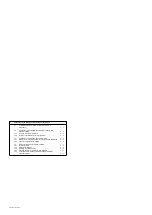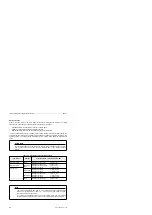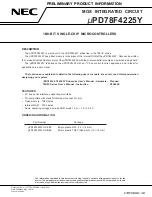
S5-95F
Guidelines for the Planning and Installation of the Product
3.4.2
Equipotential Bonding
Between separate sections of an installation, potential differences can develop if
•
programmable controllers and I/O devices are connected via non-floating links,
or
•
cable shields are connected at both ends and are grounded at different parts of the system.
Different AC supplies, for example, can cause potential differences. These differences must be
reduced by installing equipotential bonding conductors to ensure functioning of the electronic
components.
The following points must be observed for equipotential bonding:
•
The lower the impedance of the equipotential bonding conductor, the greater is the effectiveness
of equipotential bonding.
•
Where shielded signal lines are laid between the relevant sections of the system and connected
at both ends to the ground/protective conductor, the impedance of the additional equipotential
bonding conductor must not exceed 10 % of the shield impedance.
•
The cross-section of the equipotential bonding conductor must be rated for the maximum
circulating current. The following cross-sections of copper have proved to be satisfactory in
practice:
- 16 mm
2
for equipotential bonding conductors of up to 200 m (656 ft.) in length
- 25 mm
2
for equipotential bonding conductors of more than 200 m (656 ft.) in length.
•
Use copper or zinc-plated steel for equipotential bonding conductors. They must be given a
large-area connection to the ground/protective conductor and protect it from corrosion.
•
The equipotential bonding conductor should be laid so that the smallest possible areas are
enclosed between the equipotential bonding conductor and signal lines (see section 3.3).
Figure 3-3. Routing of Equipotential Bonding Conductor and Signal Line
a a a a a a a a a a a a a a a a a a a a a a a a a a a a a a a a a a a a a a a a a a a a a a a a a a a a a a a a a a a a
a a a a a a a a a a a a a a a a a a a a a a a a a a a a a a a a a a a a a a a a a a a a a a a a a a a a a a a a a a a a
a a a a a a a a a a a a a a a a a a a a a a a a a a a a a a a a a a a a a a a a a a a a a a a a a a a a a a a a a a a a
a a a a a a a a a a a a a a a a a a a a a a a a a a a a a a a a a a a a a a a a a a a a a a a a a a a a a a a a a a a a
a a a a a a a a a a a a a a a a a a a a a a a a a a a a a a a a a a a a a a a a a a a a a a a a a a a a a a a a a a a a
a a a a a a a a a a a a a a a a a a a a a a a a a a a a a a a a a a a a a a a a a a a a a a a a a a a a a a a a a a a a
a a a a a a a a a a a
a a a a a a a a a a a
a a a a a a a a a a a
a a a a a a a a a a a
a a a a a a a a a a a
Signal line
a a a a a a a a a a a a a a a a a a a a a a a a a a a a a a
a a a a a a a a a a a a a a a a a a a a a a a a a a a a a a
a a a a a a a a a a a a a a a a a a a a a a a a a a a a a a
a a a a a a a a a a a a a a a a a a a a a a a a a a a a a a
a a a a a a a a a a a a a a a a a a a a a a a a a a a a a a
Equipotential bonding conductor
EWA 4NEB 812 6210-02
3-9
















































